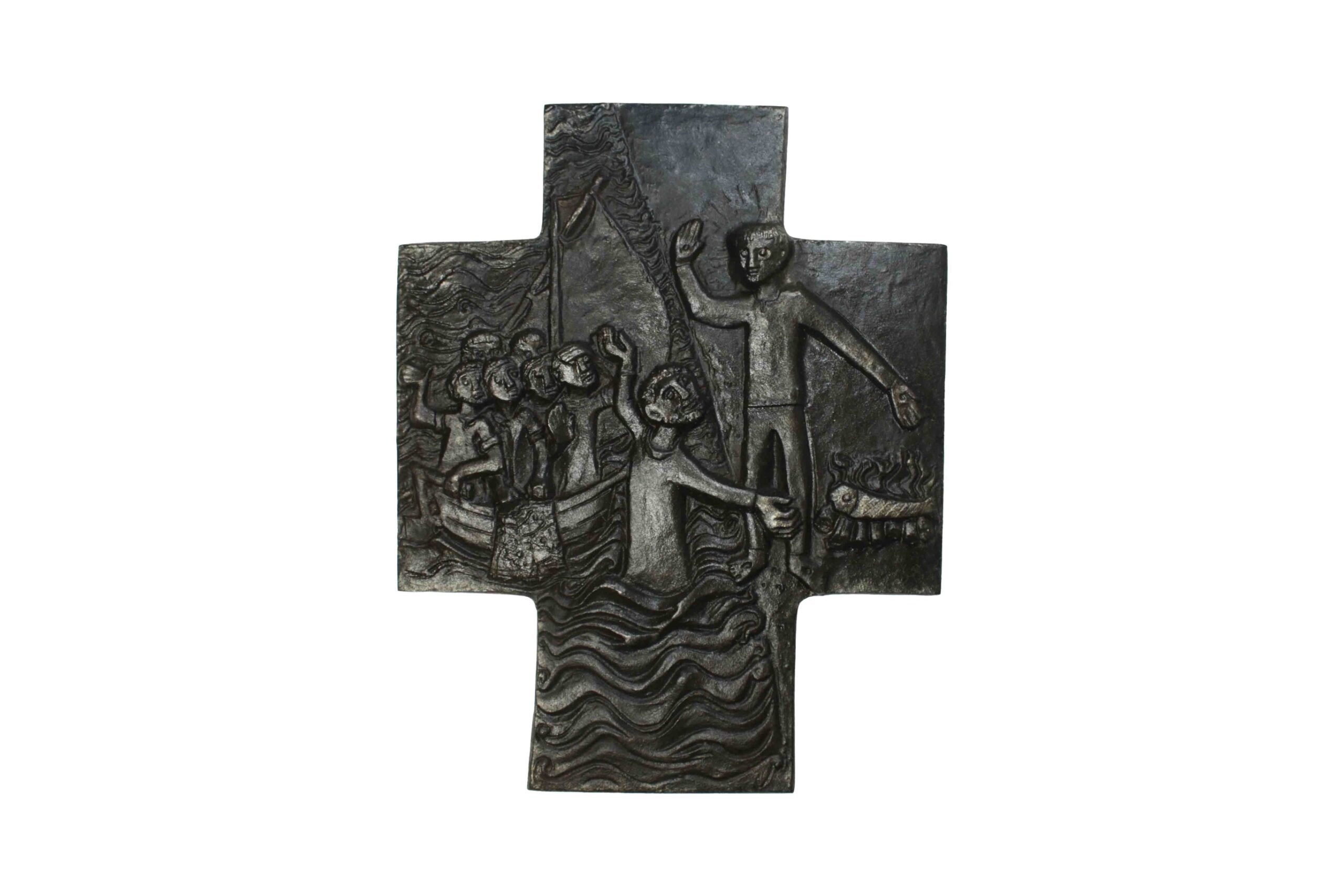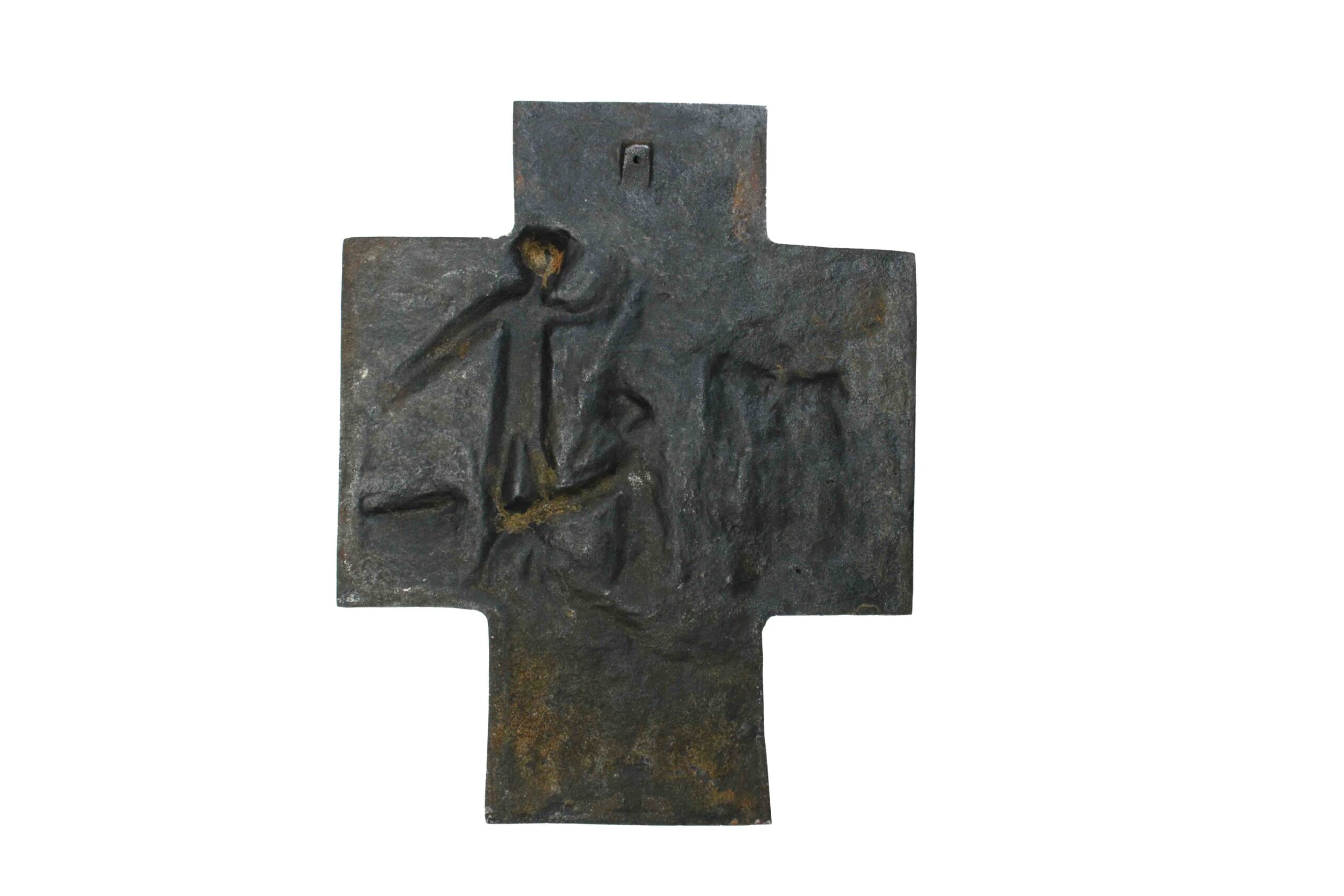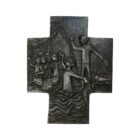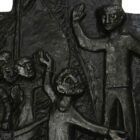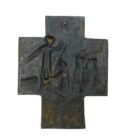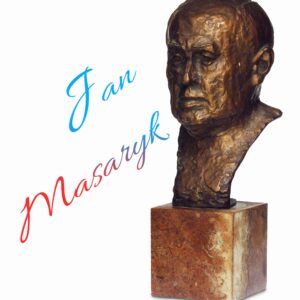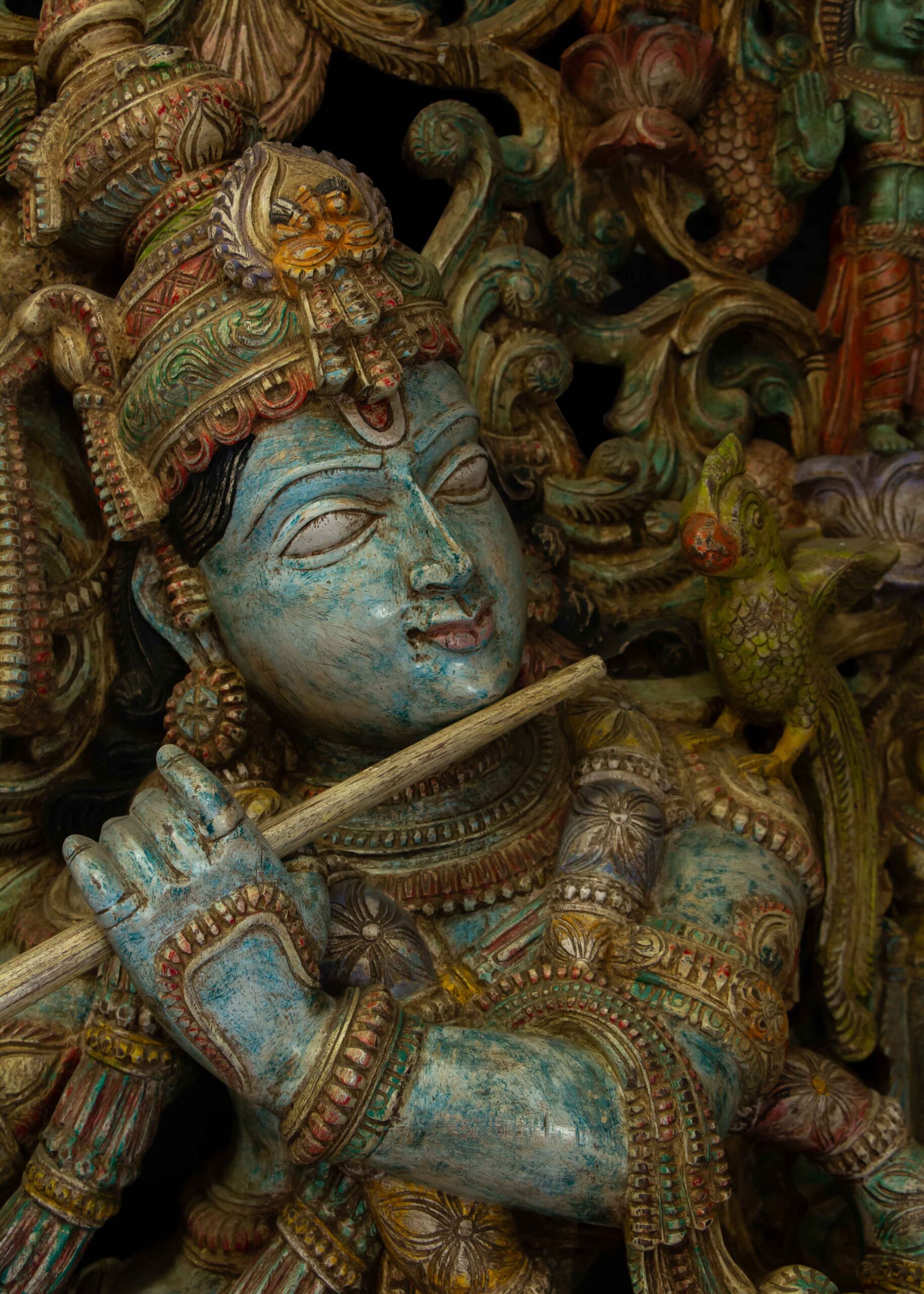Description
Egino Günter Weinert (1920 – 2012)
Born on March 3, 1920 in Berlin, his great interest in art and faith began in childhood. He soon finds his way to worship god through art. He uses a naive form to distance himself from modern trends. At the age of 14, he entered the Benedictine monastery of Münzerschwarzach as a student, discovering the new artistic style of the Beuron school, created by Benedictine monks in the 19th century. (characterized by naturalism in colors and two-dimensional figures referring to medieval art). Weinert took this, combined it with naïve art, and created his own simplistic style. He becomes a restorer and studies sculpture and gold/silversmithing. Under pressure from the Nazi regime, he was forced to enlist in the navy. During the war, he reaches Venice, participates in the restoration of the Golden Panel (Italian: Pala d’Oro), the main altar in the Basilica di San Marco, where he was able to explore the old goldsmith techniques of cloisonné, filigree and granulation. In October 1945, an accident occurs that cripples Weinert’s right hand. He learns to work with his left hand and returns to the Münzerschwarzach monastery as a goldsmith. He leaves the monastery after he is not accepted into the Benedictine Order in 1949. He finds a wife, Tereza Neumann, who greatly supports him in art, he opens two studios, in Bonn, Germany, and Lucerne, Switzerland. He becomes a great artist, his works can be found in papal collections. He received the Order of Merit of the Federal Republic of Germany. His last public work in 2000 is a stained glass window in the Benedictine monastery in the South Korean city Waegwan. Egino Weinert dies on September 4, 2012 at the age of 92.


